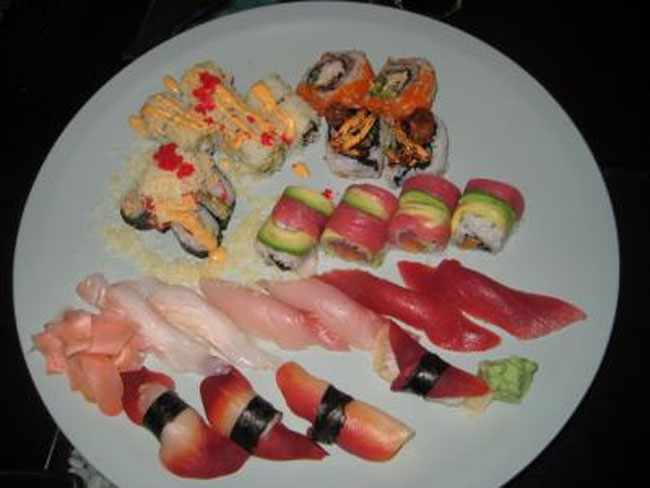Is Sushi Safe to Eat?

A Chicago man sued a restaurant in 2008 for allegedly serving him a parasitic tapeworm along with his salmon. So what about the sushi or sashimi that hungry buyers pick up to go during the lunch hour rush?
Sushi lovers need not fret about the raw fish they consume, food scientists say, as long as the sushi has been prepared properly according to regulations by the Food and Drug Administration. People preparing sushi themselves need to take extra care with both the raw fish and the rice.
The usual suspects
Raw fish poses several potential hazards for consumers besides parasites. Bacteria can develop in non-fresh fish and produce enzymes called histamines that may result in Scombroid poisoning. Certain tropical-water fish may also have a natural toxin called ciguatera which causes gastrointestinal and neurological symptoms.
Sushi eaters don't typically have to worry because sushi restaurants take certain steps in handling and preparing their fish. A required step involves freezing fish at temperatures of -4 degrees Fahrenheit (-20 degrees Celsius) for seven days, or frozen at -31 degrees Fahrenheit (-35 degrees Celsius) for 15 hours, which kills any parasites.
"As far as sushi goes, the rules are in place because people were getting sick," said Keith Schneider, a microbiologist and food safety expert at the University of Florida. "The parasites are why we do the freezing on the raw fish."
The cases of sushi-related illness fall far below the number of people sickened by contaminated produce such jalapeno peppers. Even in those rare cases, the rice in sushi is more often the culprit than the fish.
Get the world’s most fascinating discoveries delivered straight to your inbox.
"I got sick eating sushi at a place I go to occasionally — a fast food place, not a restaurant — and I could swear I came out with bacillus cereus," Schneider told LiveScience.
The bacillus cereus bacteria can spread rapidly in rice that sits at room temperature. Sushi rice requires an acidic bath in a vinegary solution that lowers the PH to 4.1, killing troublemaking microbes and making sushi safer for the everyday foodie.
Don't walk on the wild side
Many sushi lovers feast contentedly on albacore or eel, but a few people aim for a more dangerous culinary experience by eating the raw flesh of a poisonous puffer fish called fugu.
Master fugu chefs sometimes include some of the poison in their prepared dish, which creates a tingly feeling on the lips when eaten. However, improperly prepared fugu can kill due to the fish's potent neurotoxin.
"I consider it more of a dare than a delicacy," Schneider said. "There are people who kill themselves every year trying to make fugu, and it gives sushi a bad name."
As for trying to make sushi with raw meat other than fish, best perish the thought.
"Raw chicken, raw beef has probably much greater risk," Schneider said, pointing to bacteria such as E. coli and salmonella that can sicken thousands each year in the United States. "There are reasons you don't have chicken sushi."
No food is completely without risk, but smart consumers can eat sensibly and enjoy – as long as fish are around.
Expert tips for happy sushi eating
- The best bet for a good meal involves going to a restaurant or grabbing a sushi container from the local supermarket.
- If you absolutely want to prepare your own sushi, buy sushi-grade fish that has been frozen per FDA regulations.
- Eat your sushi as soon as possible, and do not let it sit in the fridge for more than 24 hours.
Follow Life's Little Mysteries on Twitter @llmysteries. We're also on Facebook & Google+.



